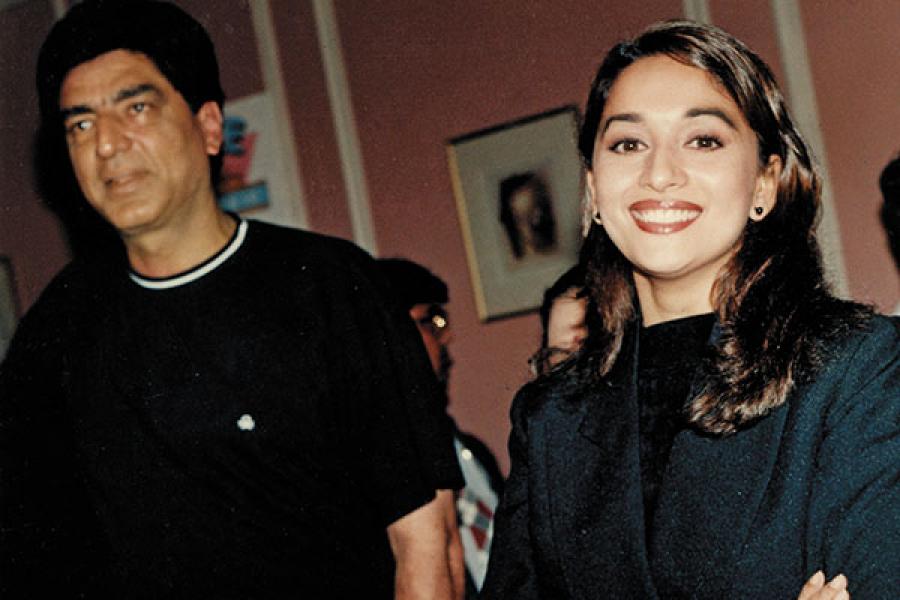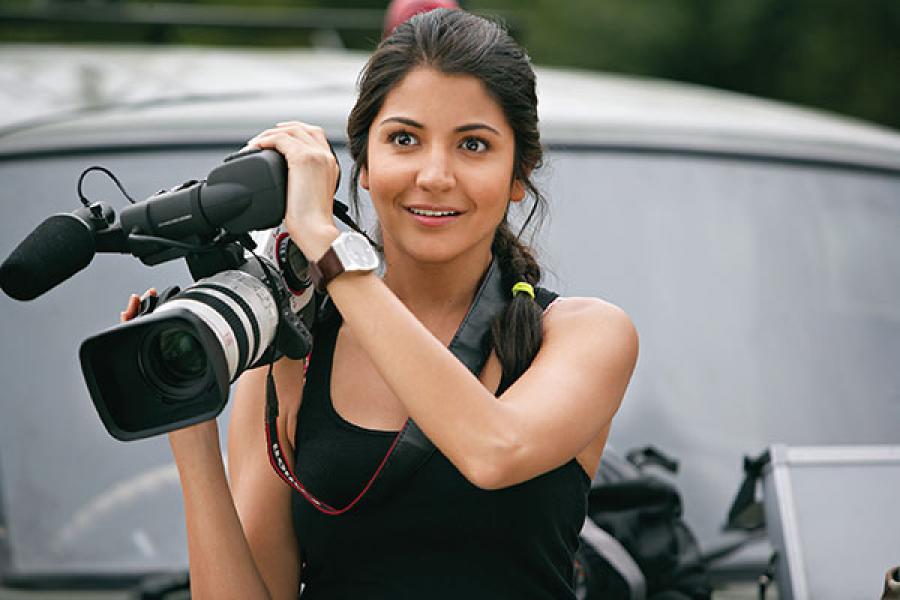
The evolution of the star's manager
Once upon a time, managing actors meant handling their shooting schedules and payments; today, it's bigger, glitzier, with a heavy dose of corporate might
While working on a celebrity issue—as opposed to working on our regular business stories—we have come to realise the significance of, no, not just the celebrity, but also the celebrity ‘manager’. You want an interview? Call the manager (not once, or twice, but several times). A photo shoot? Manager again. Location, styling, and photographer for the shoot? You guessed it: The manager.
The manager is what you could call the star’s ‘interface’. They manage the actor’s shooting dates, daily schedules, every form of professional commitment, interviews with journalists, and the media; they even hand out advice on career and clothing, investments and interactions.
And, like stars themselves, star management too has evolved: From being a one-person, one-office show, it is now a full-fledged corporate enterprise, teeming with staff and worth millions. While old-school managers still flourish, with their phones and files and office assistants, talent management agencies have added a thick layer of glam to the job.
But back in the day, when being a manager had little to do with glamour, there was (and continues to be) Rakesh Nath, better known as Rikkuji within the industry. On a wall in his Juhu office hangs a framed testimony: “Limca Book of Records. To Rakeshnath, for being the business manager for maximum number of actors and actresses in Bollywood [sic].” Surrounding this frame, and adorning every wall of the office are photographs of him with actors and actresses from the 1970s, ’80s, ’90s… right up till Kangana Ranaut.
“I started promoting actors for survival,” says Nath. “I came to Bombay [from Punjab] to become a film producer in December 1969 and lost all my money. Surviving in Bombay is very difficult, so I did a lot of work. One day, I was working as a production assistant, when a young girl called Ranjeeta Kaur offered me her work [in the mid-1970s]. Immediately, I grabbed the opportunity. We clicked and the movies she worked in did well. She worked with the best heroes, so in a way, I was lucky for her, and she for me. I worked with her for about 12 years, till she got married.”
The success with Ranjeeta led to many more associations, some of which proved to be even more successful; the most notable, perhaps, being the one with Madhuri Dixit. “It was while I was working with Anil Kapoor that I met Madhuri, through her hairdresser. She was working in television at that time, and on a film called Abodh, directed by a Bengali director called Hiren Nag. I liked her face, and thought she was capable of doing good work. By then, I had developed a knack of recognising talent. I thought, she is a talented girl.” This was in 1984, when Dixit, a teenager, was soon approached by the biggies of filmmaking: Subhash Ghai and Boney Kapoor.
He has also worked with Shilpa Shirodkar, Adnan Sami and Kangana Ranaut, among others. But despite the high-lumen roster, he says he has only worked with newcomers: “In my career, I have never worked with any star, I have always worked with newcomers; and this has happened by chance, not by choice. No star has offered me work; it has always been newcomers who have come to me. And I have grown with them.”
“Managing an actor is different for different levels of artistes: If you are a newcomer who is absolutely raw, it is very different from when you are working for an established actor,” he adds.
This is something that YRF Talent claims to have got down pat: Its portfolio boasts of names like Rani Mukerji, Anushka Sharma, Ranveer Singh, Parineeti Chopra and Sushant Singh Rajput.
Settling in for a long chat after a morning shoot is Ashish Patil, business and creative head, and vice president at Yash Raj Films (YRF).
Following the influx of large studios into India, Aditya Chopra, YRF’s chairman, decided to ramp up production eight or nine years ago, and embarked on grooming directors and producers. From the traditional output of one film every two years (followed by his father Yash Chopra, and then by Aditya himself), the target was revised to five to six films a year. “Our model is not an acquisition model: Our processes are built from scratch; we are creatively involved right from the idea to how we distribute it, everything is in-house,” says Patil. ‘This is what gives a certain look and feel, and a control over the final creative output. Therefore, it is important to groom the right people, and work with the right people.”
But soon they realised that investing in talent was not enough. “We were investing in this talent but not really controlling it. So, what Aditya wanted to do was set up a unit that grooms, nurtures, builds, controls and monetises talent.” And that was why YRF Talent was set up in 2008. “It’s strategically a very large power centre more than a profit centre.”
Started in 2008 with the launch of Anushka Sharma—quite literally their poster child—YRF now handles about 13 or 14 actors. “I believe five out of the top 10 stars of the future are with us,” Patil says.
Aiming to launch between two to four new stars every year over the next five years, YRF Talent is working towards becoming a self-sufficient ecosystem. Unlike other talent management agencies that often handle only one or two aspects—say films and endorsements—of an actor’s professional commitments, YRF Talent handles everything: Films, endorsements, events, public relations, and digital presence and content. This, says Patil, is essential to creating a consistent brand image of the actor, where “all this works together, feeding off each other”.
Ask Nath what his work entails, and his reply seems a world removed from YRF. “My intention is to do good things for them. A lot of [managers] don’t allow their actors to meet everybody: If an actor is approached for work, or for an interview, and if the actor does not want to talk, then the manager will not meet you. But I always meet them because if you don’t meet them, you will not get to know that person,” he says. “And this is not just about journalists, but also about film producers and directors. By doing this, there is no malice. The actor may not agree to do the film because of the subject, or because of dates. But if the filmmaker comes back again for the same actor, we can work together.”
What about film scripts? What role does the manager or management agency play in the selection? “I always tell my actors, “Kahaani aap sun lo [You listen to the storyline],” says Nath. “If I like a story, but the actor does not, what’s the use? I have always left that decision to my actors. Money and dates, leave it to me. How much money they should get for a project, what they deserve, I will decide. At what time the film should be released, after which film, the producer, director and I will decide. The actor should agree to the story and I will take care of the rest.”
At YRF, predictably, things are far more structured. “We put our money where our mouth is. All actors we manage are backed by a three-film contract with YRF. So you know that if it’s a YRF artiste, there is a stamp of approval; that the actor is not just a looker or only a dancer, they are here for the long run,” says Patil. “We are not like a lot of other agencies, which will probably sign on a Miss India and then go to Ekta Kapoor and say, ‘Isko launch karo’.”
YRF also invests significantly in grooming and training actors. Depending on the requirements of a particular script, they rope in experts in the fields of dance or diction to work with the actors. For instance, says Patil, “Sushant [Rajput, who plays MS Dhoni in a forthcoming biopic] is training for cricket; he is training with some of the people who trained Dhoni. Grooming depends on each person’s skill sets, and the requirements of a film.”
What is perhaps most glaring among the differences between the old-school and new-age management outlook, is the approach to brand endorsements. While, for the old-school, endorsements were hardly essential—the number of celebrated actors of yesteryears who never endorsed any brands is large—today, they are as significant as the films themselves.
Nath has a simple advice: “I have always told my actors that you should do the kind of ads that get you respect; money, of course, but respect too. It’s the same rule that applies to doing movies.” He, of course, admits that actors consider ads to be a significant part of their career today. “I think the trend was started by Amitji [Amitabh Bachchan] and Shah Rukh [Khan].”
Ask Patil about endorsements, and he launches into a discourse on strategies, brand positioning, brand image (of the product and the actor), clutter-breaking campaign concepts and the like. Endorsing a product now works two ways: It is not just the actor who is endorsing a product (and therefore lending it star power and, perhaps, credibility), but the product, too, is enhancing the image of the actor. So, no, Sushant Singh Rajput, who is the face of Garnier and Pepsi, will not be seen holding a bottle of Harpic.
“Our strategy always is ‘less is more’,” says Patil. “We are never going to stretch [actors] so thin that they are on 18 brands. Katrina is a fantastic actress, and we have done three to four films with her and I am sure we will continue to work with her. But she’ll be on Yardley for powders and talcs, on Lux for soap, on Veet, on Olay for cold creams… I think it does not serve the purpose of a brand beyond a point for a star. You have to build strong strategic deals. Katrina’s Slice deal is her most memorable and the strongest association she has.” Brand endorsements also move seamlessly between films and advertisements, the big screen and the small, music channels and social media.
“When Anushka signed a deal with Canon, we were shooting for Jab Tak Hain Jaan, in which she is shooting a documentary on Shah Rukh’s character. All the gear she used switched to Canon. So, you are looking at Shah Rukh Khan through a Canon viewfinder. Likewise, when Anushka goes on a holiday and is watching a Coldplay concert, turning the pictures she takes into a photoblog for Canon is something only we can do,” explains Patil.
The most recent example of YRF putting its might behind an ad is the ‘Ranveer Ching’ campaign for Ching instant noodles and soups. When Capital Foods [makers of Ching] approached YRF to sign Ranveer Singh for the brand, YRF pitched for more than just Singh. “We said, yes, sure, but can we do something more, add more value?” says Patil.
“Ching is a challenger brand [to Nestlé’s Maggi and Unilever’s Knorr] and its biggest requirement was saliency. A simple strategic solution: Singh is Ching. Ranveer Singh becomes Ranveer Ching. It is very in-your-face.”
YRF got the entire Kill/Dil team to work on the ad: Shaad Ali directing it, Gulzar writing the lyrics, Shankar-Ehsaan-Loy doing the music, Ganesh Acharya choreographing it. “It is not going out as an advertising jingle, it is going out as a film song to 17 music channels, it’s going to radio stations; it gets amplified. And you create a music video that is going to be consumed as content, not as an ad. It is on YouTube and gets a few million views. It is not the kind of attention a 30-second ad would get.”
Although Patil claims the Ching ad campaign has worked wonders and has taken competition “to the cleaners”, Kill/Dil failed to stir the domestic box office with a total collection of about Rs 34 crore by November 29.
(This story appears in the 26 December, 2014 issue of Forbes India. To visit our Archives, click here.)
-
 Elisabeth Moses
Elisabeth MosesPlease help us with celebrities for endorsing various campaigns on social issues like education, health child labour, gender and advocacy etc.
on Aug 2, 2016


















